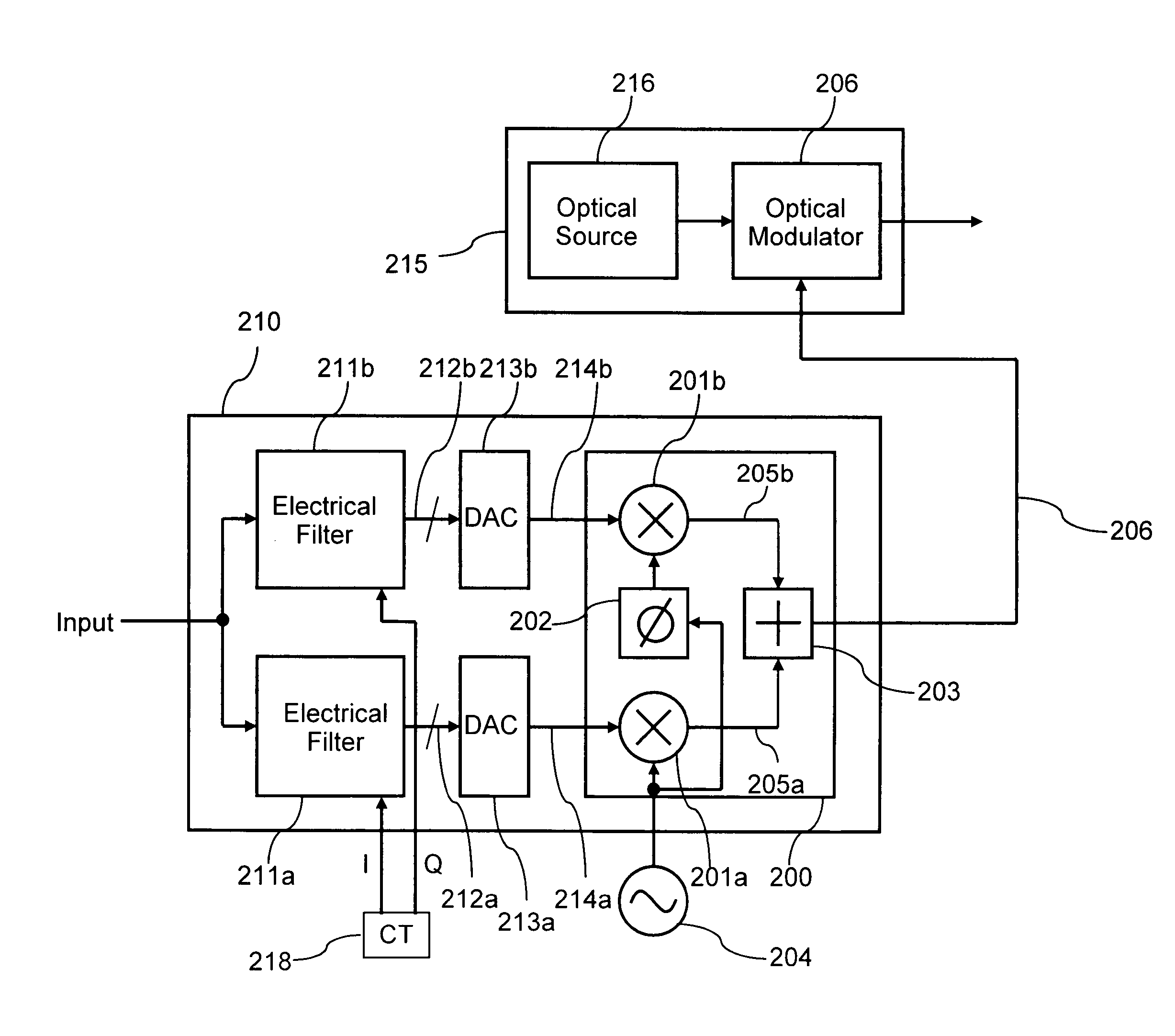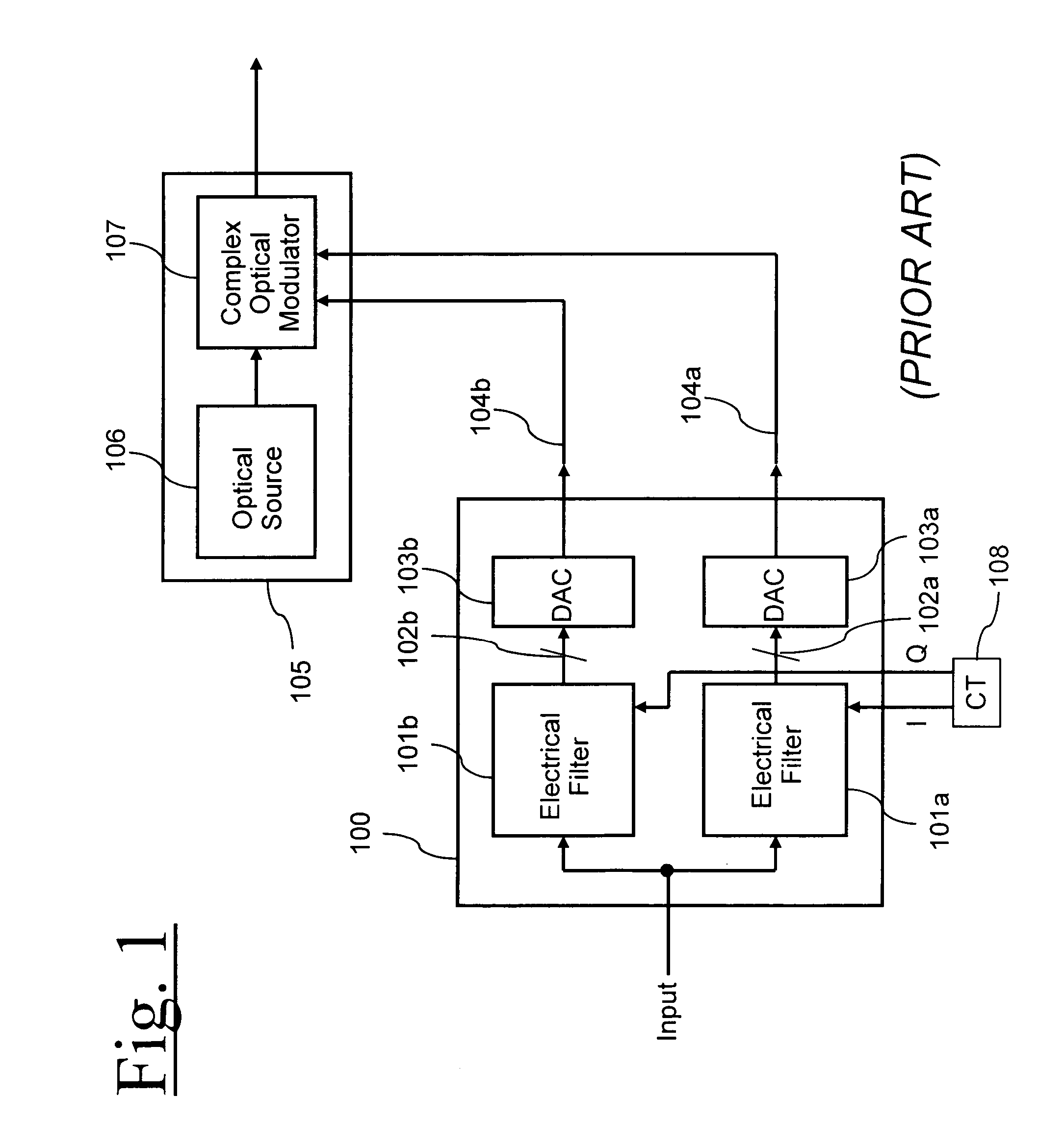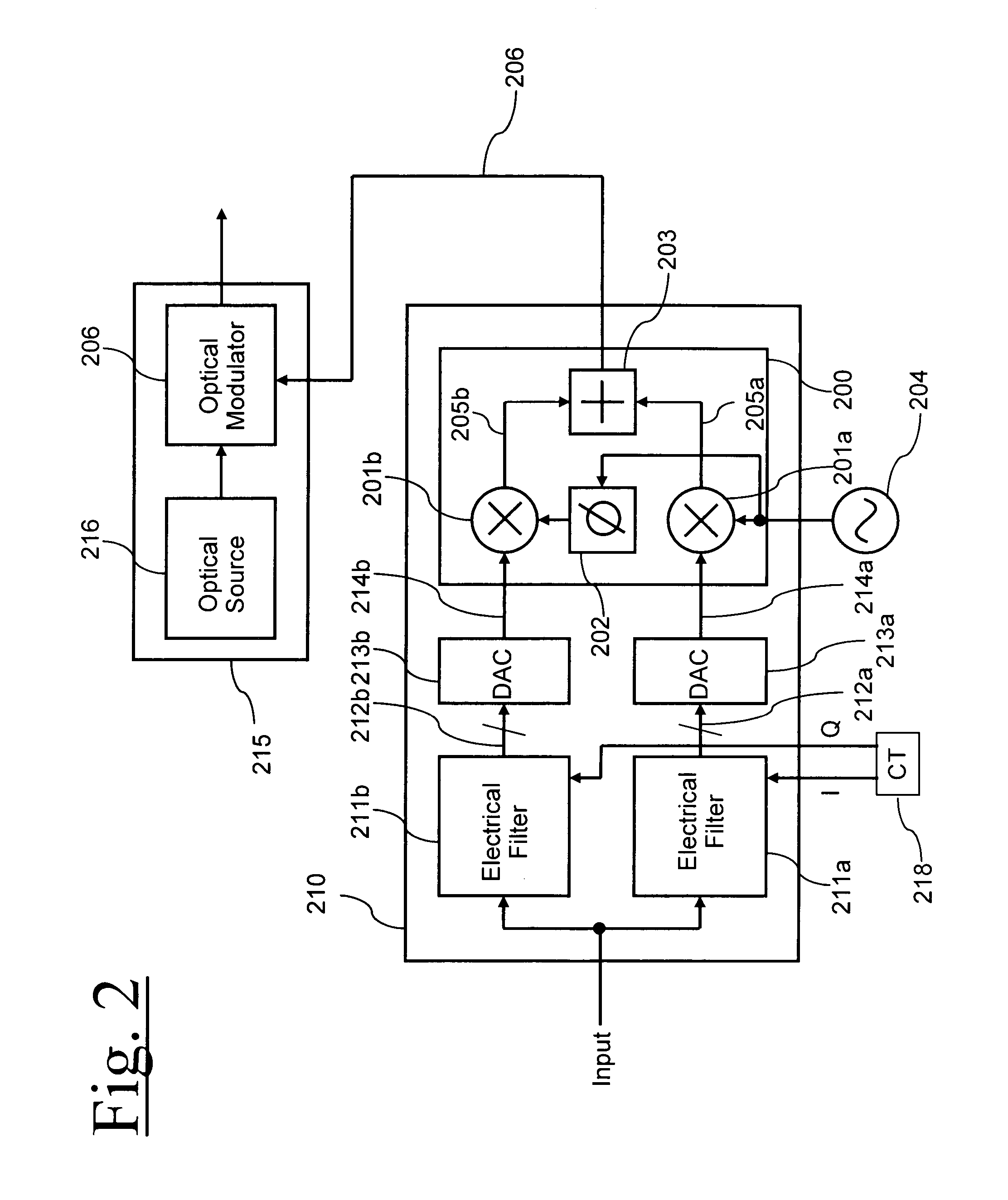Electrical compensation of optical impairments
a technology of optical impairment and electric compensation, applied in the direction of optical transmission, electrical apparatus, electromagnetic transmission, etc., can solve the problems of chromatic dispersion, optical signal distortion, and high cost, and achieve the effect of reducing impairment and low cos
- Summary
- Abstract
- Description
- Claims
- Application Information
AI Technical Summary
Benefits of technology
Problems solved by technology
Method used
Image
Examples
first embodiment
[0035]FIG. 2 shows a schematic block diagram in accordance with the present invention. Here there is an optical transmitter 215 comprising an optical source 216 (which may be a semiconductor laser and may be wavelength tunable) and an optical modulator 206. The optical modulator 206 is different from the complex optical modulator 217 in that it only takes a single input 206 and can therefore not modulate the amplitude and phase of an optical signal independently. This modulator 206 may be an electroabsorption modulator with a single electrical input. The modulator 206 may be monolithically integrated on the same substrate as the optical source. The information to be transmitted is coupled to a different electrical pre-distortion unit 210 comprising two paths to generate the I 214a and Q 214b signal components of the pre-distorted signal. The two paths each comprise an electrical filter 211a and 211b, which may be digital filters, a serial to parallel converter 212a and 212b and a di...
second embodiment
[0041]FIG. 5 shows the present invention in which there is an optical transmitter 215 and an optical pre-distortion unit 210. Here there are two paths and two electrical filters 211a and 211b, taking additional inputs from the I and Q components of the pre-distortion transfer function respectively. In this embodiment, these digital signals are directly fed into the upconverter unit 200, which is now implemented in a digital form. The output from the upconverter unit is then a single digital signal which is coupled to a serial to parallel converter 212 and a digital to analogue converter 213. This configuration has the advantage that more of the processing is performed digitally for greater fidelity and only a single digital to analogue converter is required. However this digital to analogue converter must have a wider bandwidth.
third embodiment
[0042]FIG. 6 shows a third embodiment in which a direct detection receiver is used instead of a coherent receiver. Here there is also an optical transmitter 215, a pre-distortion unit 210 an optical link 300 and a receiver 301. However in this instance instead of removing the unwanted sideband 401 by an electrical filtering means, an optical filtering means is used 500. This filter may positioned anywhere within the optical part of the system, e.g. before, after or within the optical link 300. The optical filtering means may be positioned within the optical transmitter 215 and may also be combined within an optical element used for establishing the wavelength of the optical source. Typically a laser package would incorporate an optical filter on the rear facet for monitoring its wavelength. By moving this element to the front facet, the element would perform the dual functions of wavelength monitoring and unwanted sideband removal. The optical filter 500 may instead be incorporated ...
PUM
 Login to View More
Login to View More Abstract
Description
Claims
Application Information
 Login to View More
Login to View More - R&D
- Intellectual Property
- Life Sciences
- Materials
- Tech Scout
- Unparalleled Data Quality
- Higher Quality Content
- 60% Fewer Hallucinations
Browse by: Latest US Patents, China's latest patents, Technical Efficacy Thesaurus, Application Domain, Technology Topic, Popular Technical Reports.
© 2025 PatSnap. All rights reserved.Legal|Privacy policy|Modern Slavery Act Transparency Statement|Sitemap|About US| Contact US: help@patsnap.com



